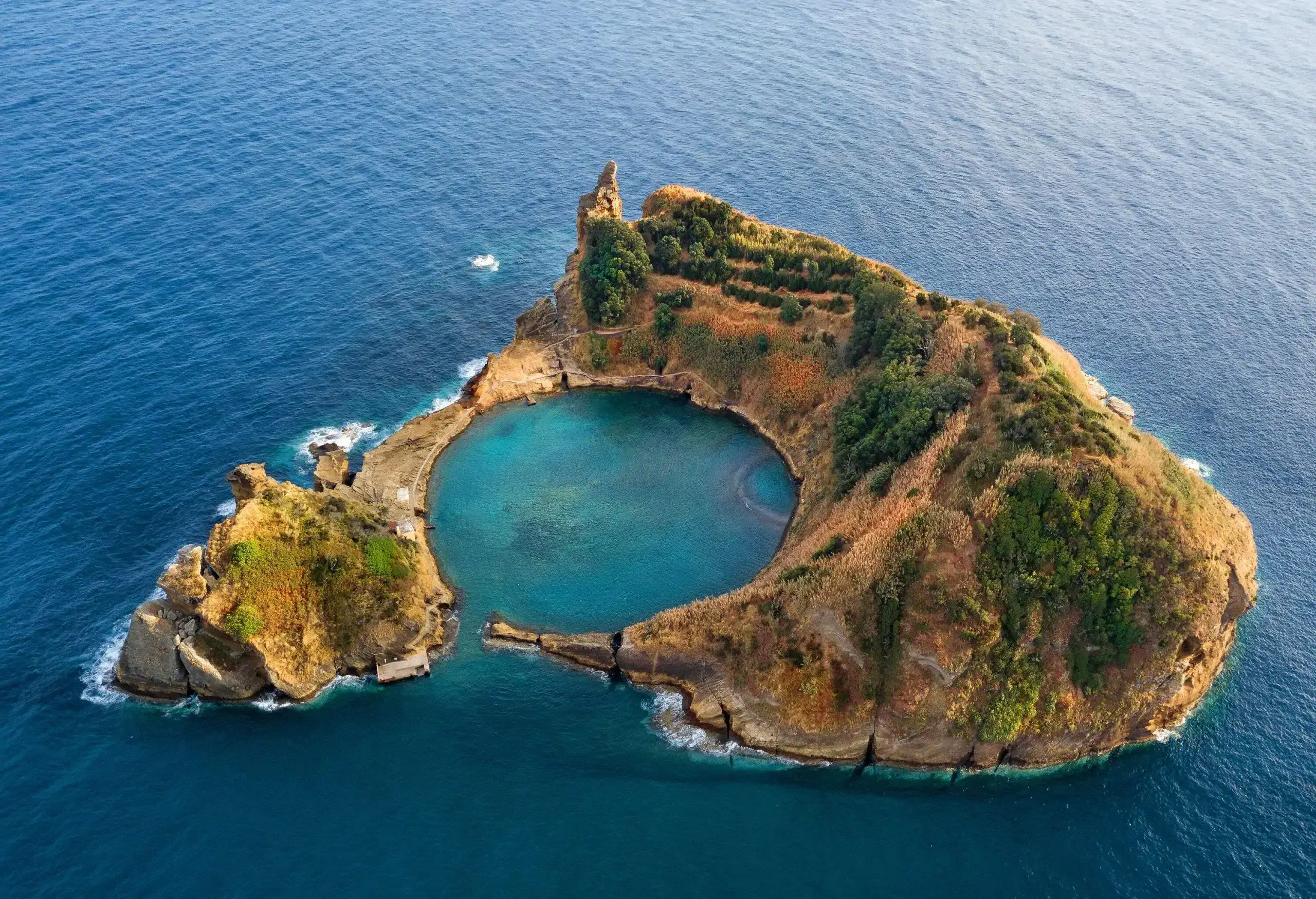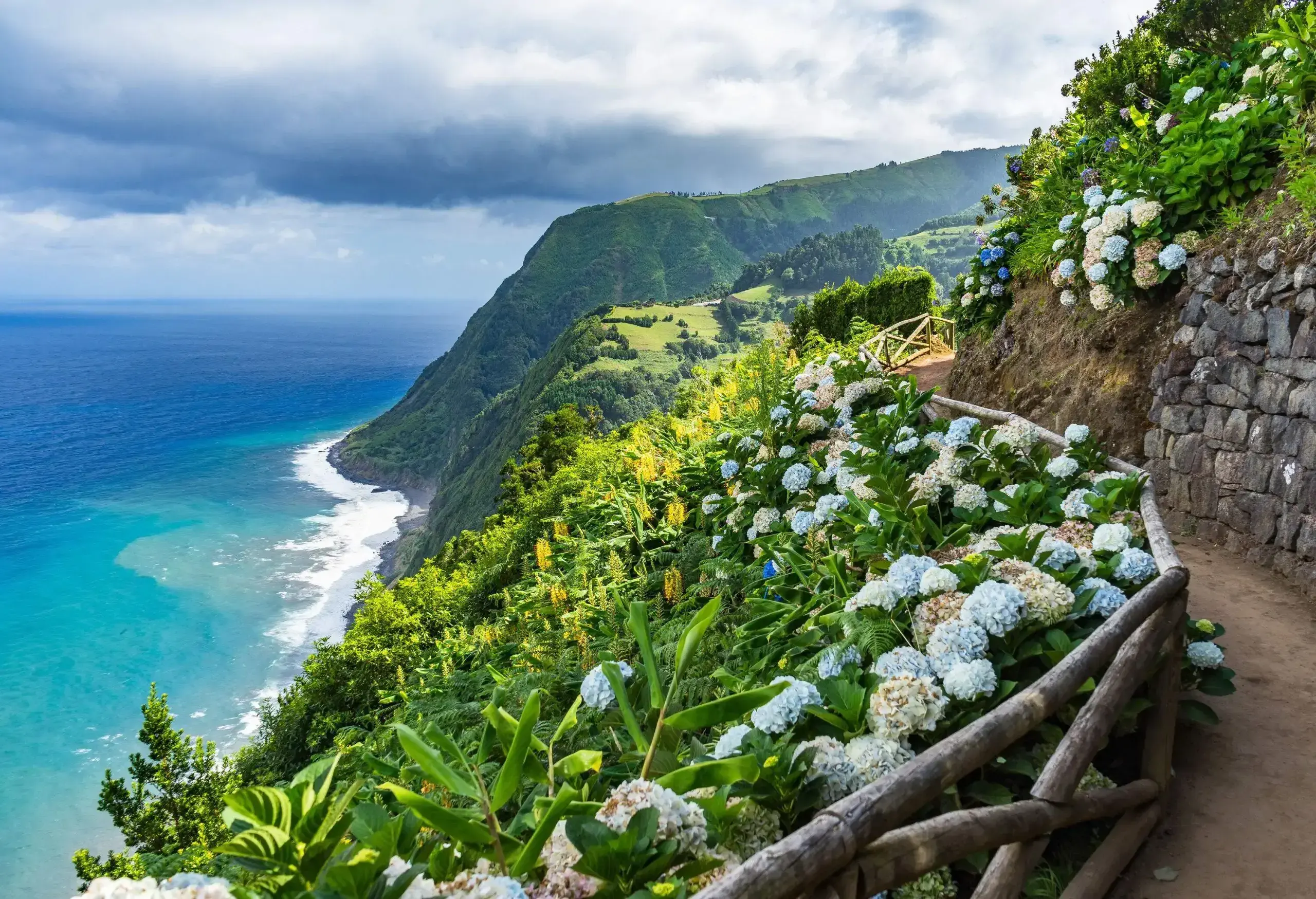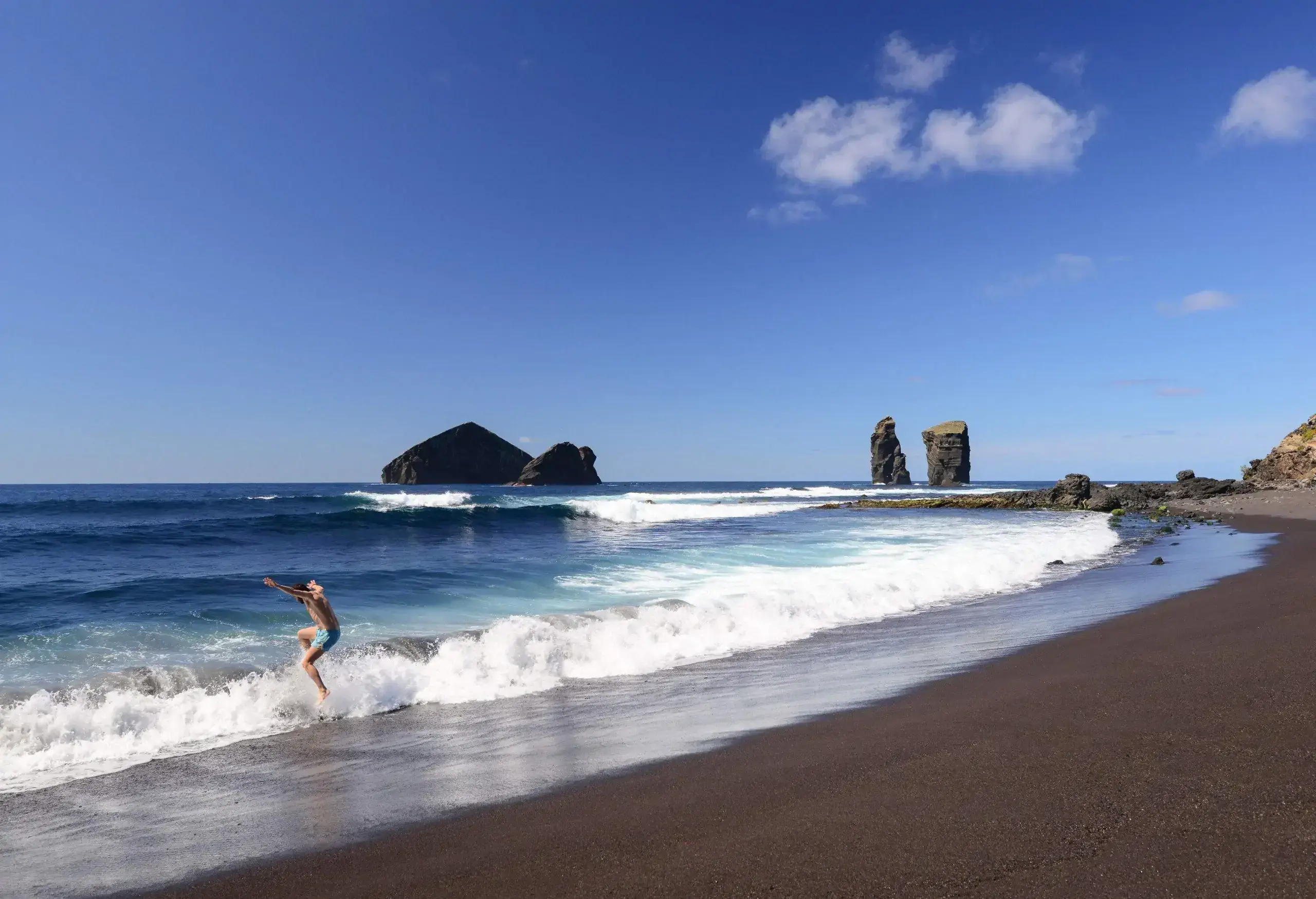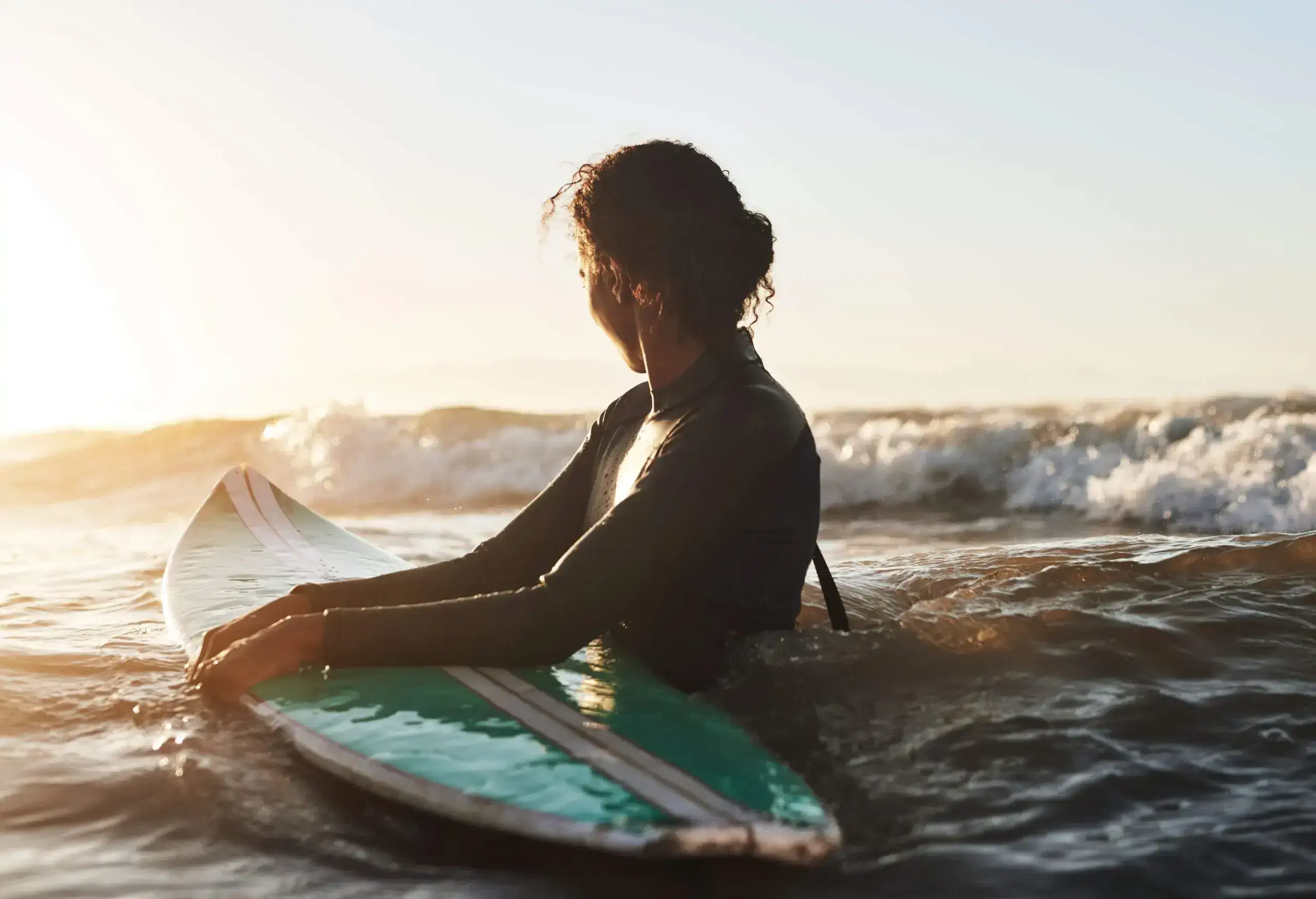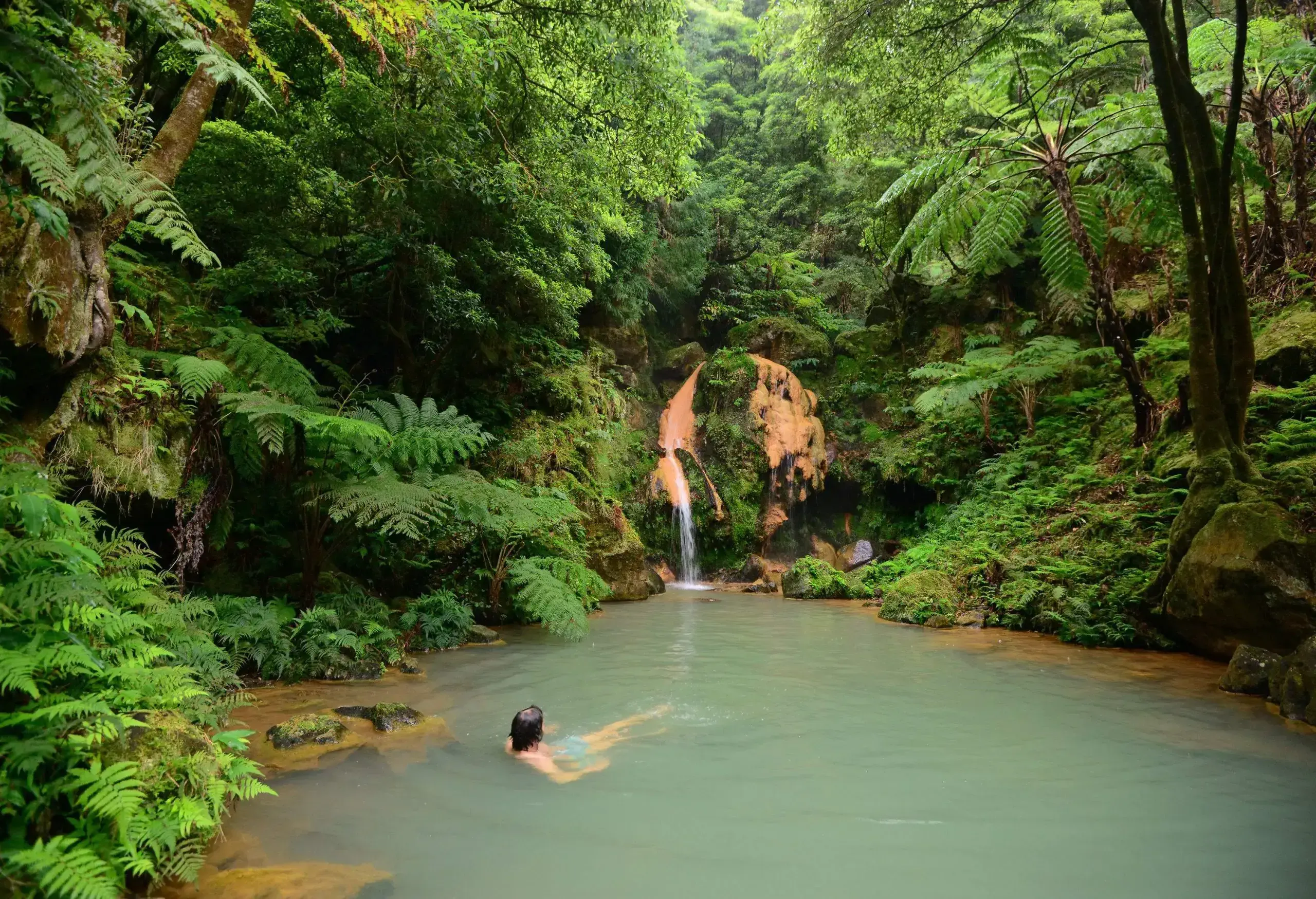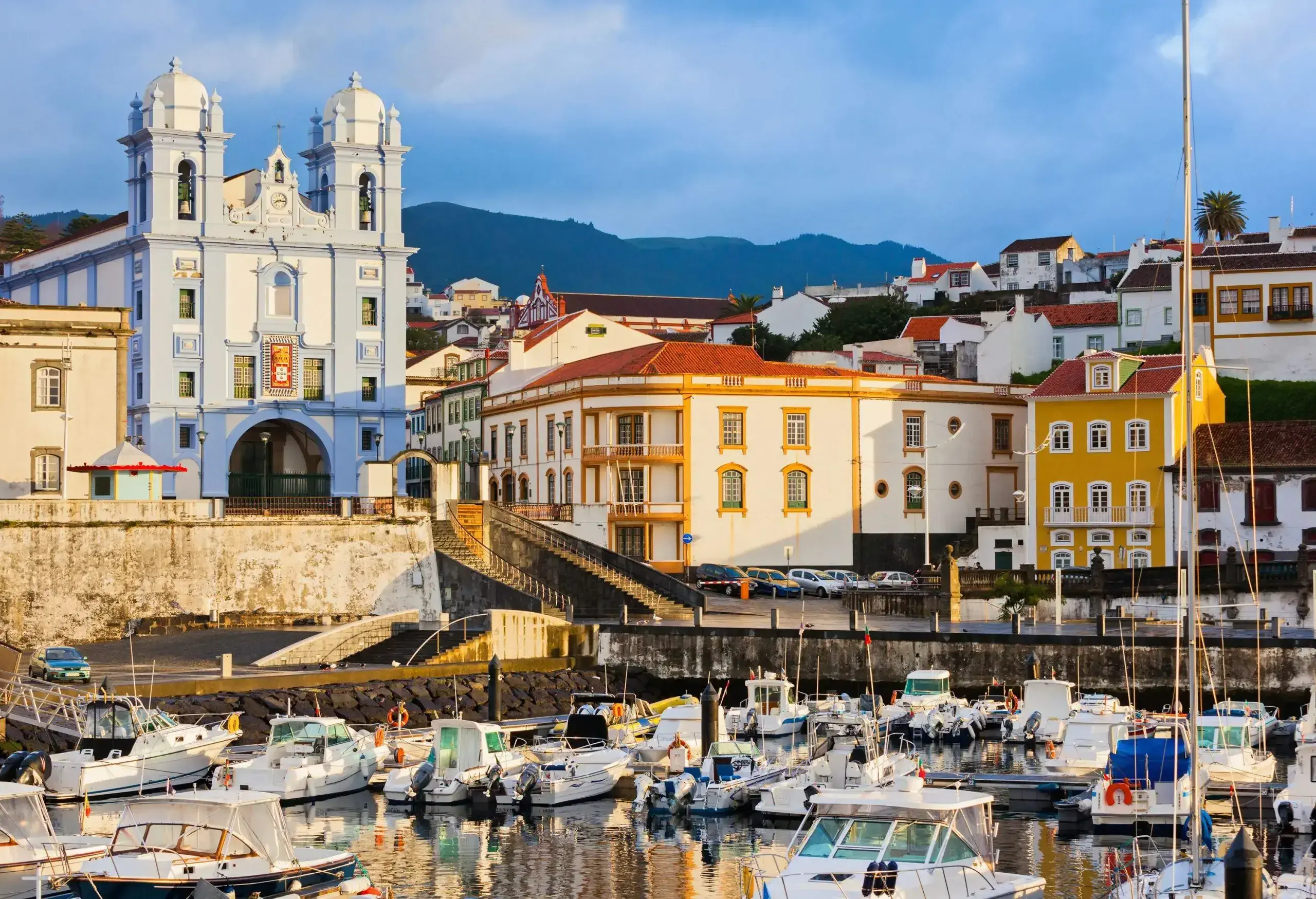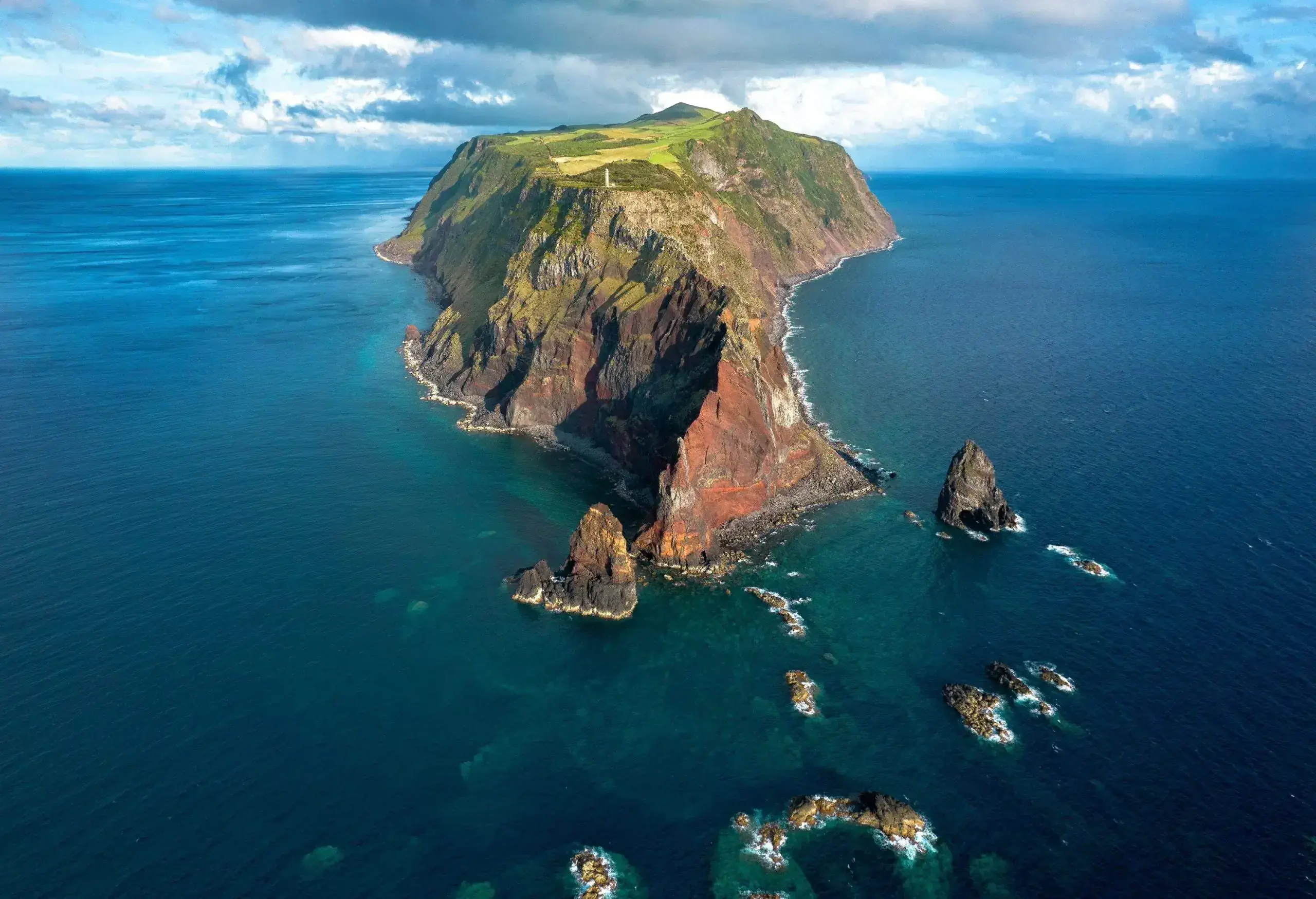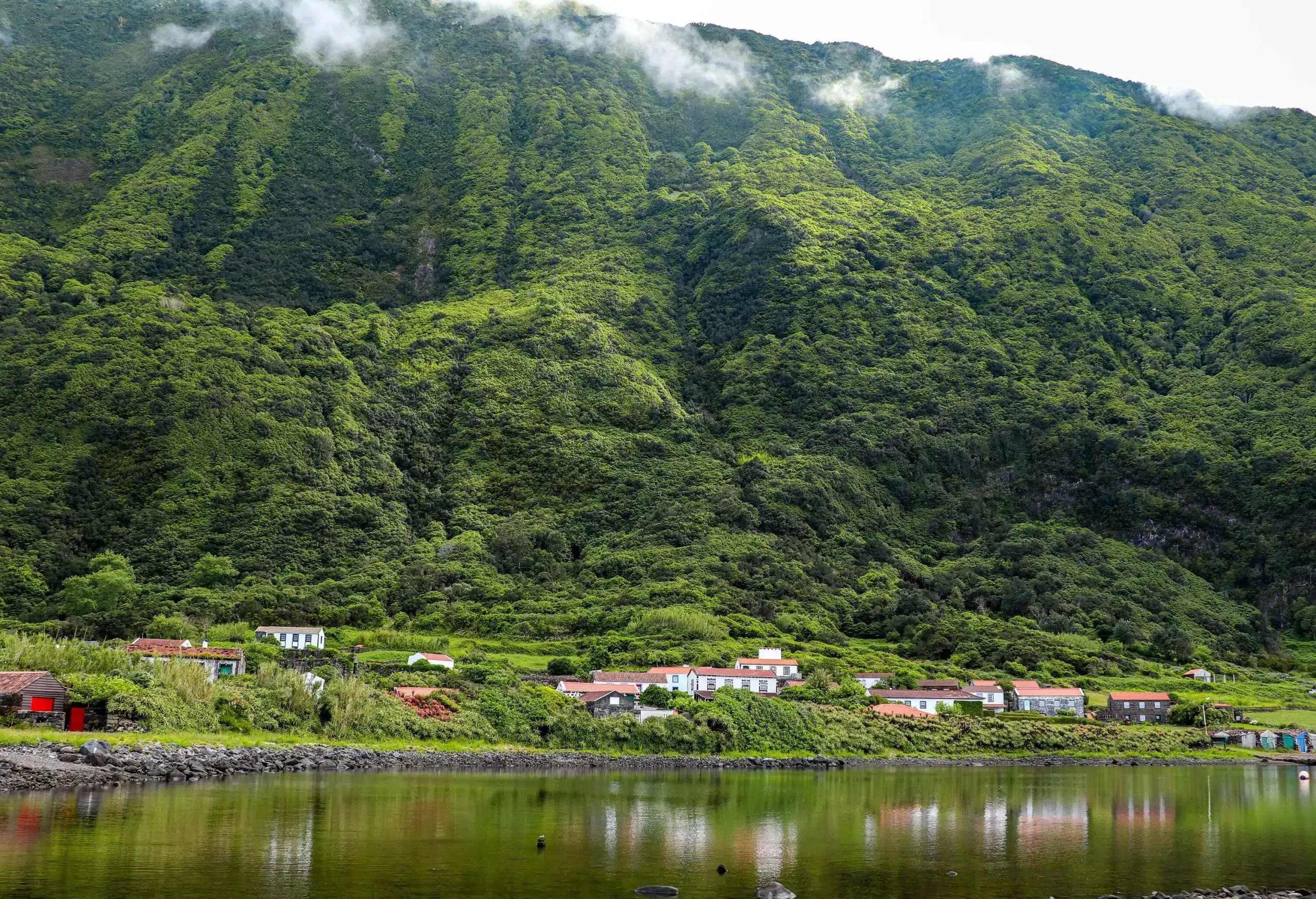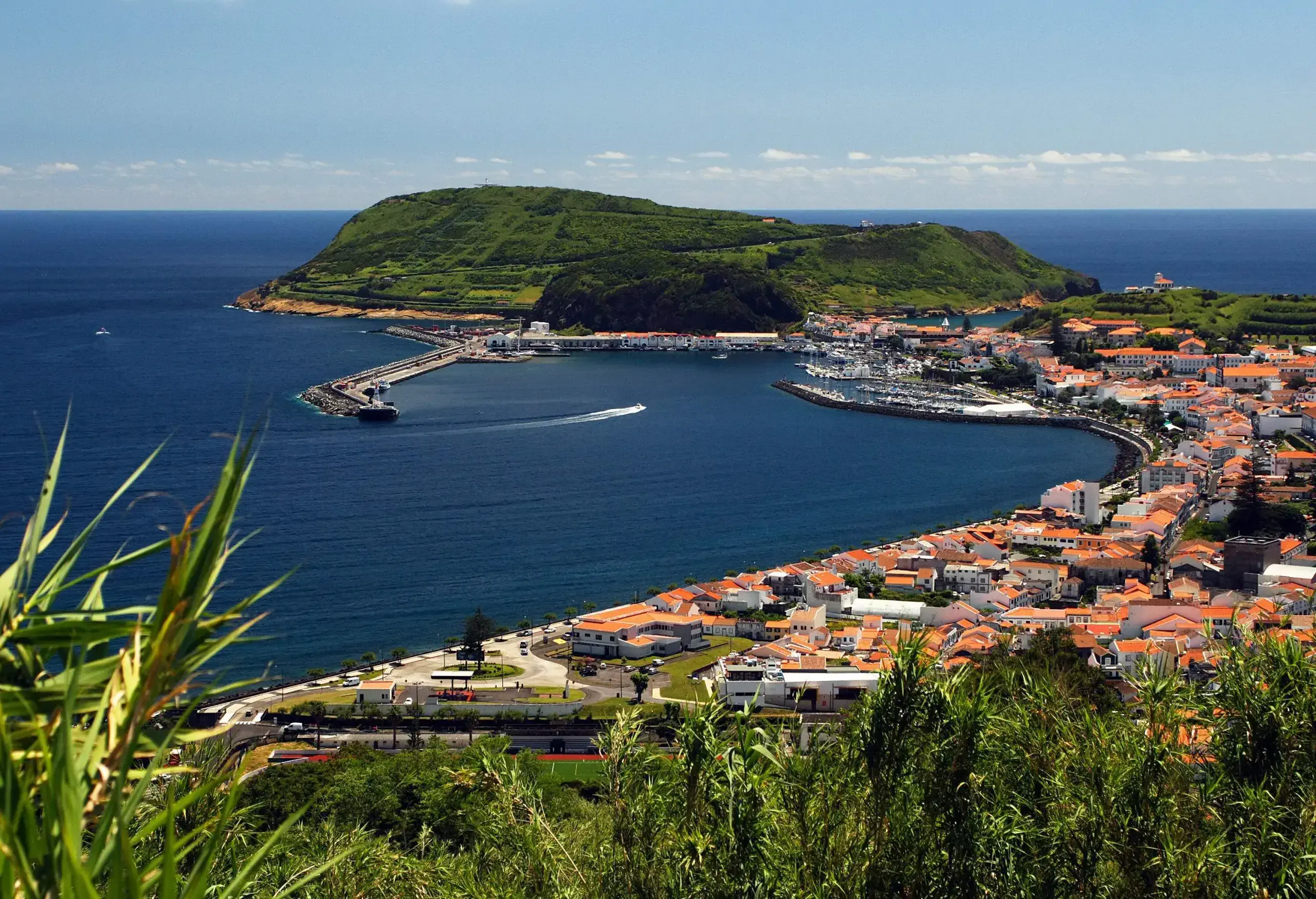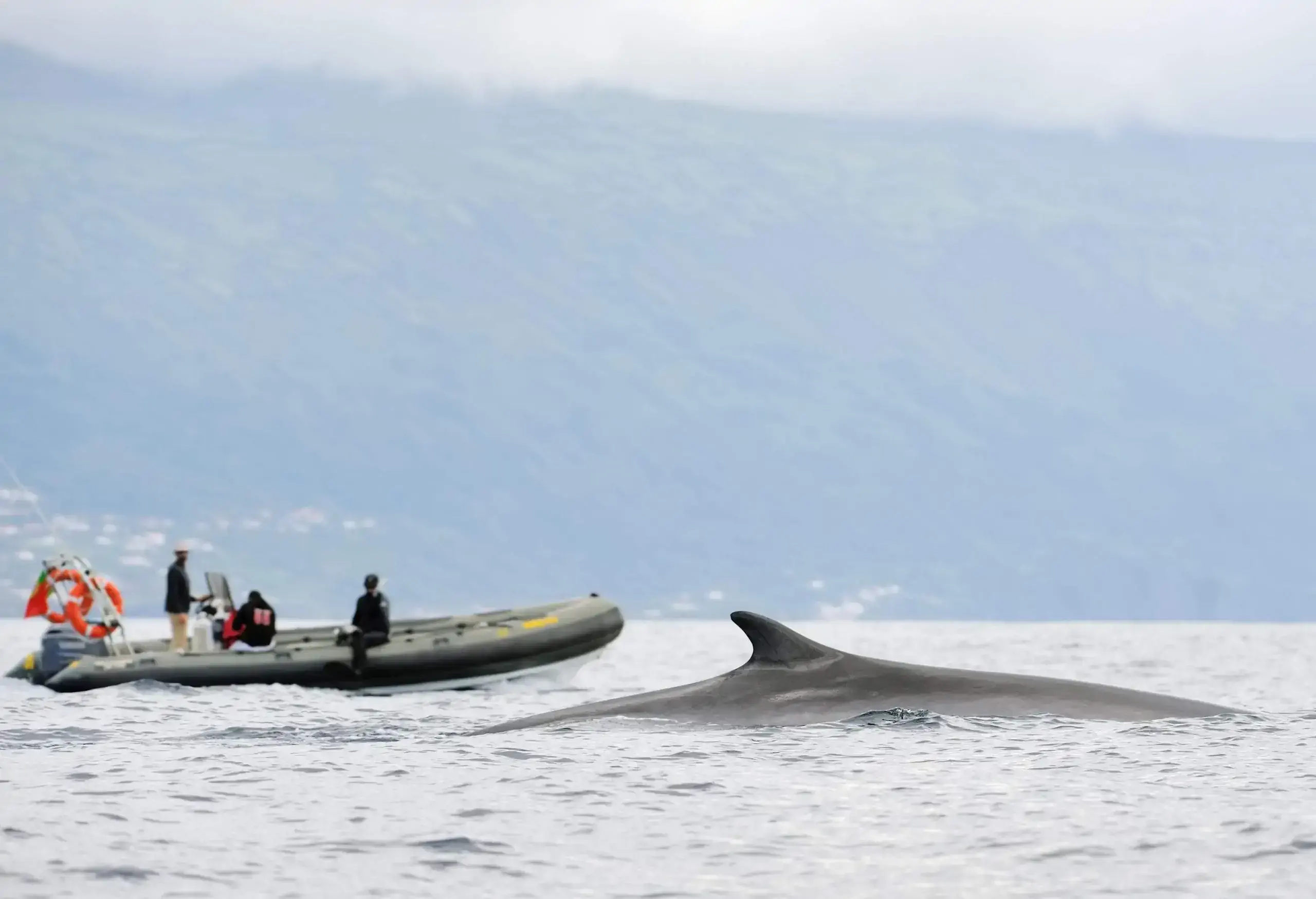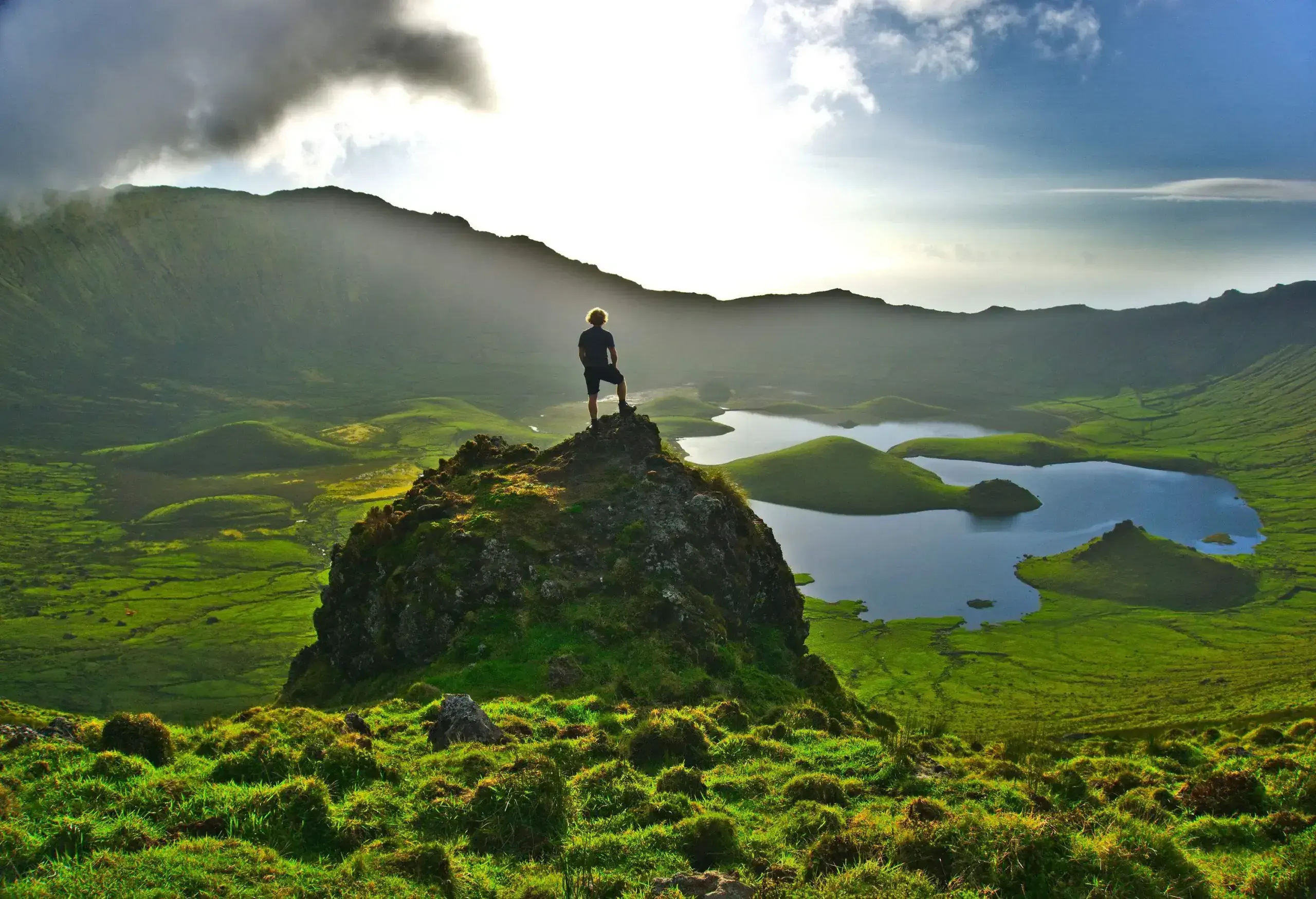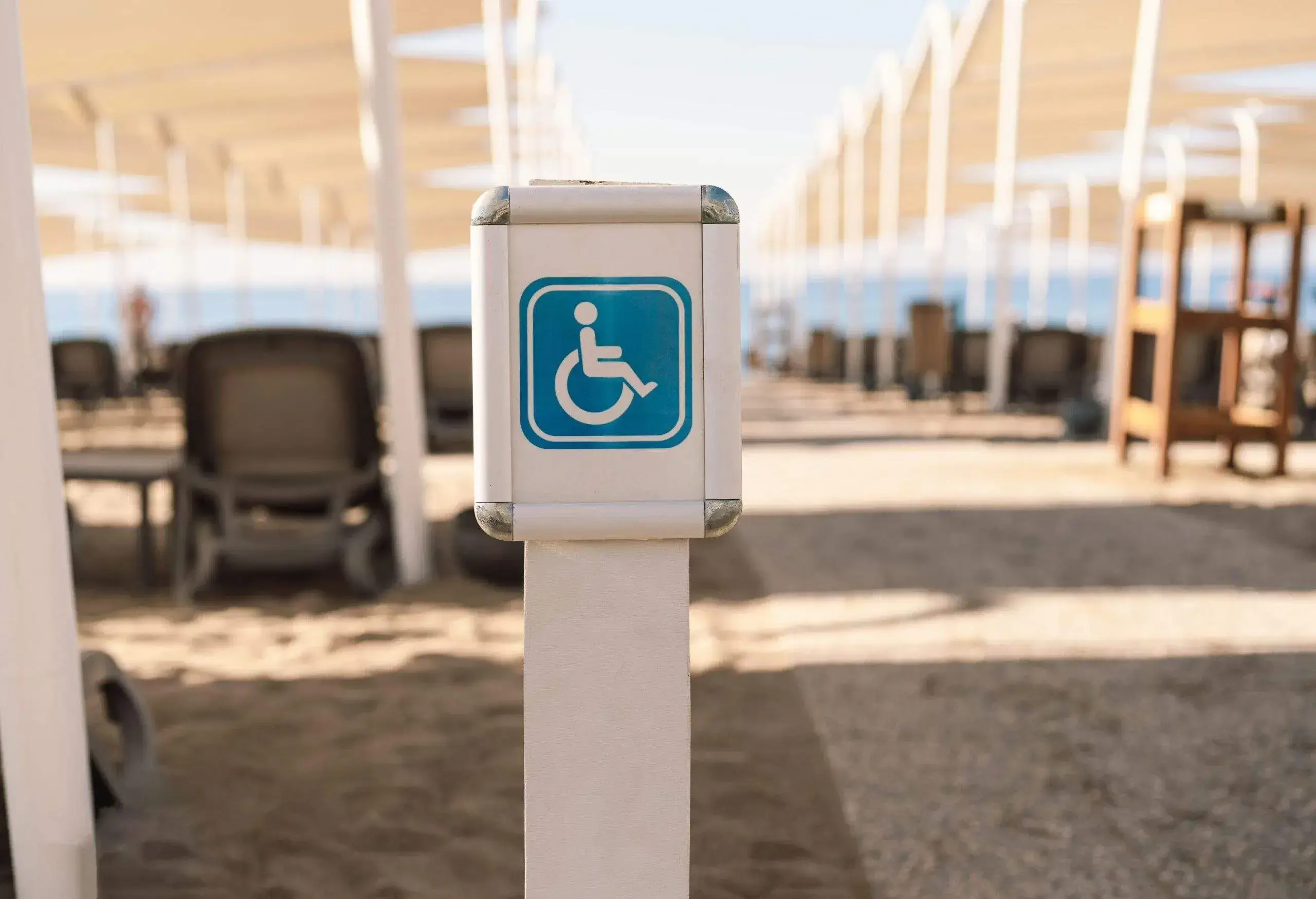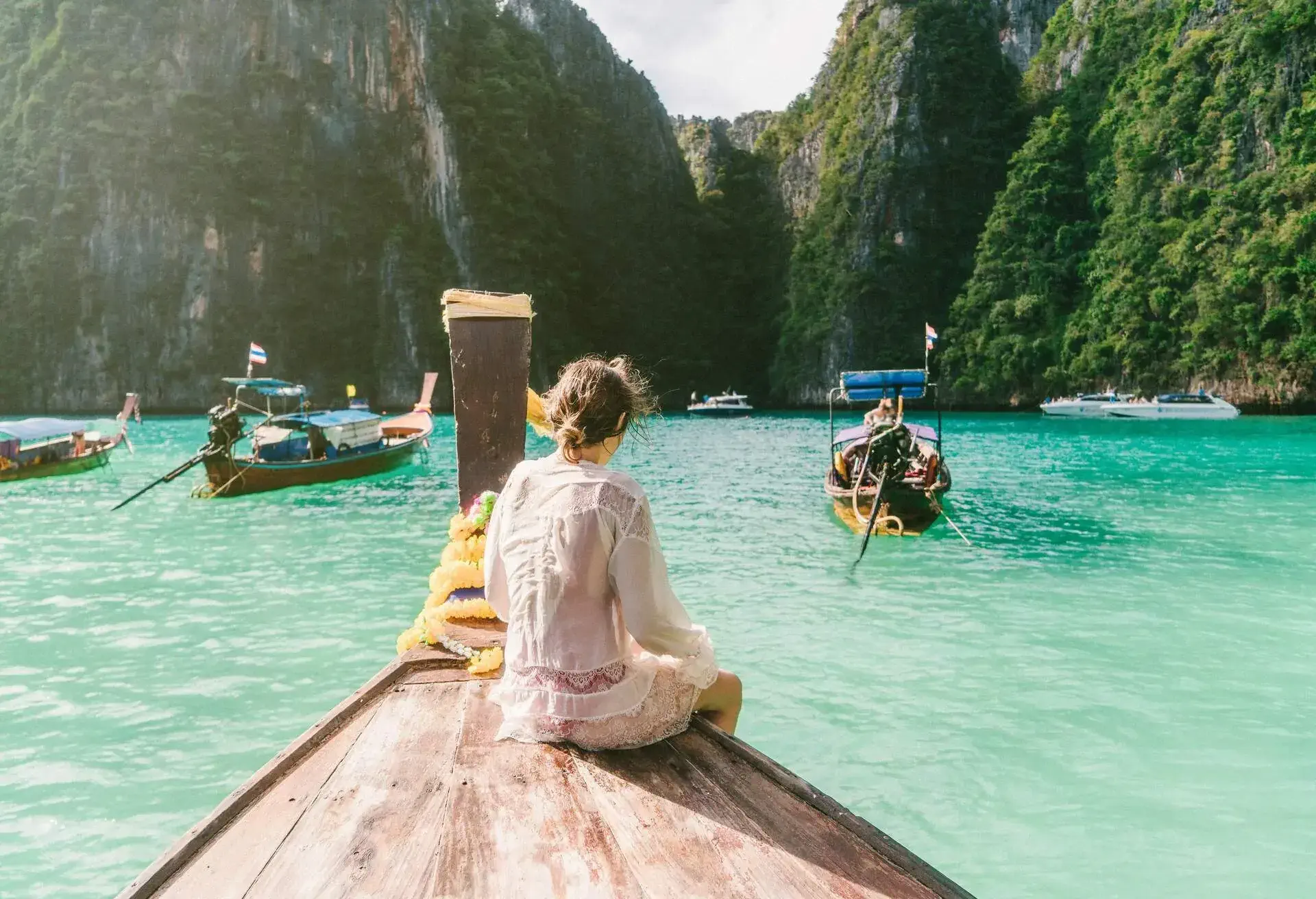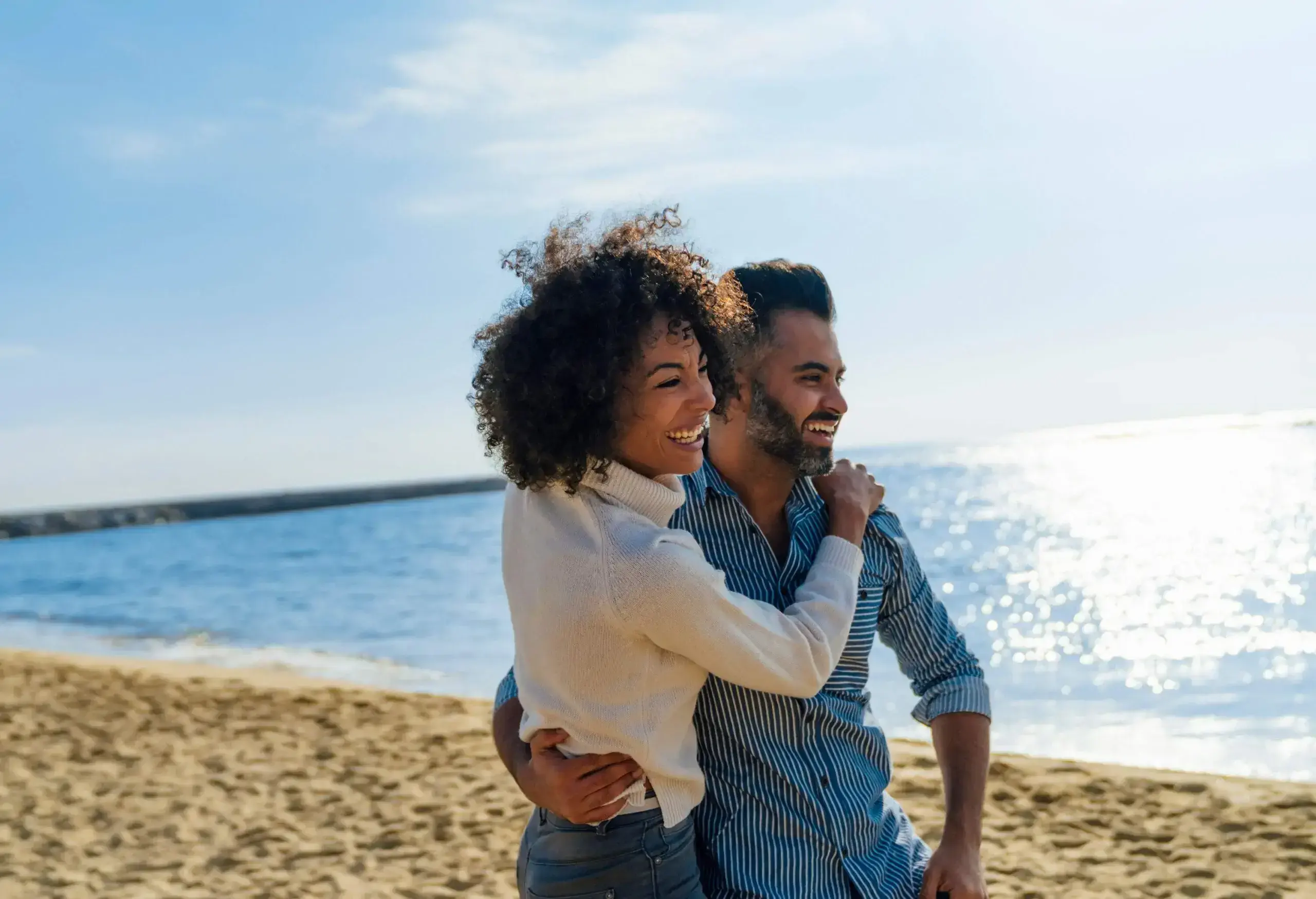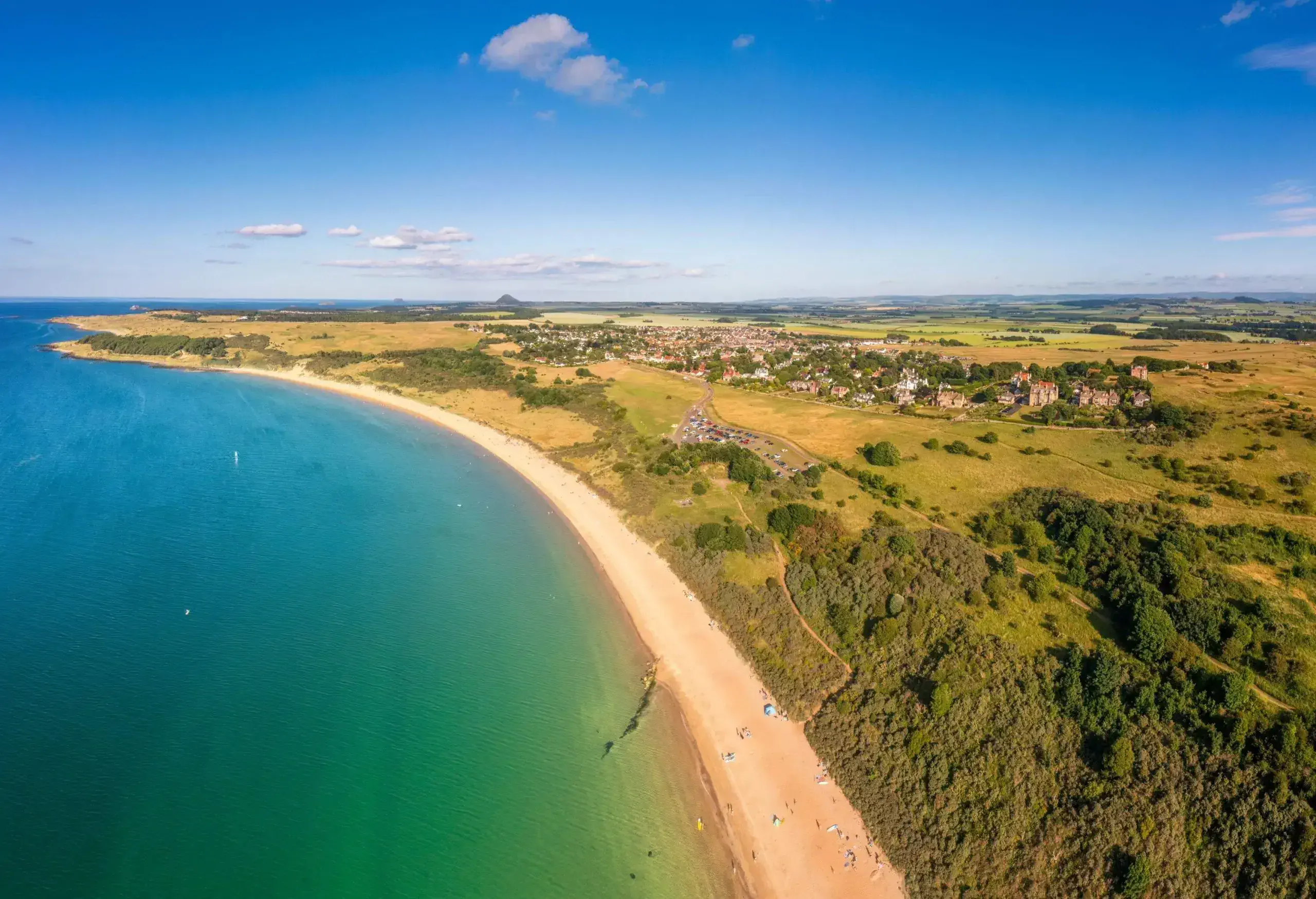The Azores beaches are some of the most interesting in the world, with black sand formed by volcanic residue. If you’re not sure where the Azores are, they’re an archipelago in the mid-Atlantic, roughly 950 miles from Portugal, and are an excellent holiday alternative to the Canary Islands.
Unique features of Azores beaches
The Azores islands were created by oceanic volcanic activity, which carved out unusual coastal areas, as well as small beaches with fascinating features.
The striking black sands of the Azores beaches
On your first visit, you’ll be struck by the beach sand colour, which either have black sands or dark rocky features. Above them rise steep green cliffs, from where you can gaze over other volcanic rock formations in the ocean. These are known for being some of the nicest beaches in Portugal.
An all-year holiday climate
The climate is mild, as the Atlantic Gulf Stream passes through, warming the coastal waters. The temperature rarely dips below around 16 degrees Celsius, with a high of about 22 degrees Celsius, on par with the best Greek islands.
9 Volcanic islands in the middle of the Atlantic Ocean
There are nine islands in the archipelago of Azores, each offering special beaches and tourist attractions.
São Miguel
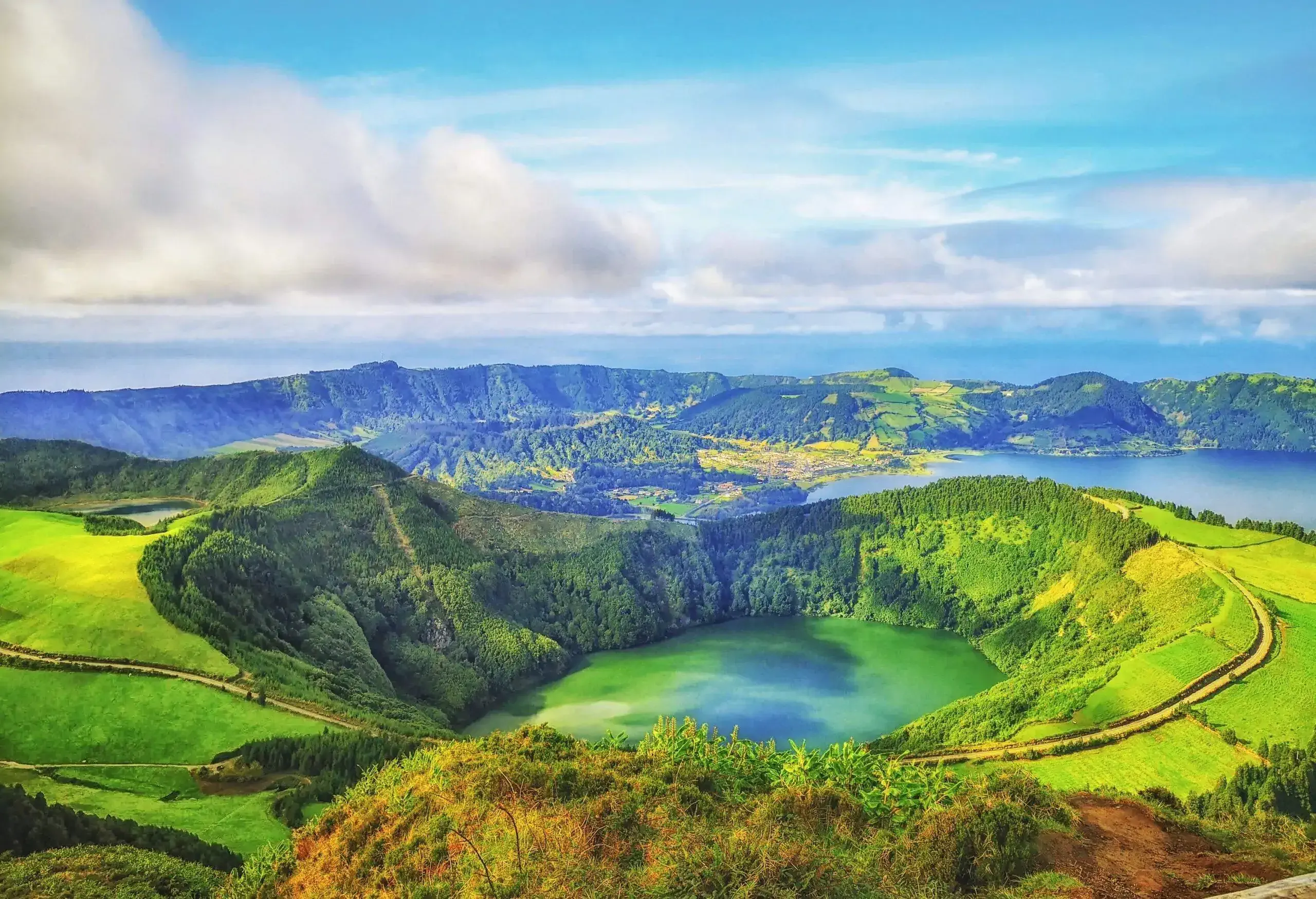
I usually fly into São Miguel (PDL), the largest of the nine islands. The most common way to get there is to board a plane from London, stopping over in Lisbon before flying onwards.
Exploring São Miguel
The island is best known for its thermal springs and volcanic lakes. The two lakes in Sete Cidades are the most popular for water sports like kayaking. You can also lounge in the hot springs at Caldeira Velha, and eat a meal cooked by burying pots between the steam vents at Furnas.
São Miguel beaches
There are several beaches to explore in São Miguel, with Praia dos Mosteiros the most popular. It’s small, with black sands and surrounded by hills with lush vegetation. You could also try the Blue Flag Praia do Fogo, where the warm waters rise from hydrothermal vents.
For more space, head to Praia de Santa Bárbara. The sea conditions here are good for surfing too. Or take a short ferry ride to the islet of Vila Franca do Campo. This is a dramatic swimming hole in a volcanic crater surrounded by ocean.
Santa Maria
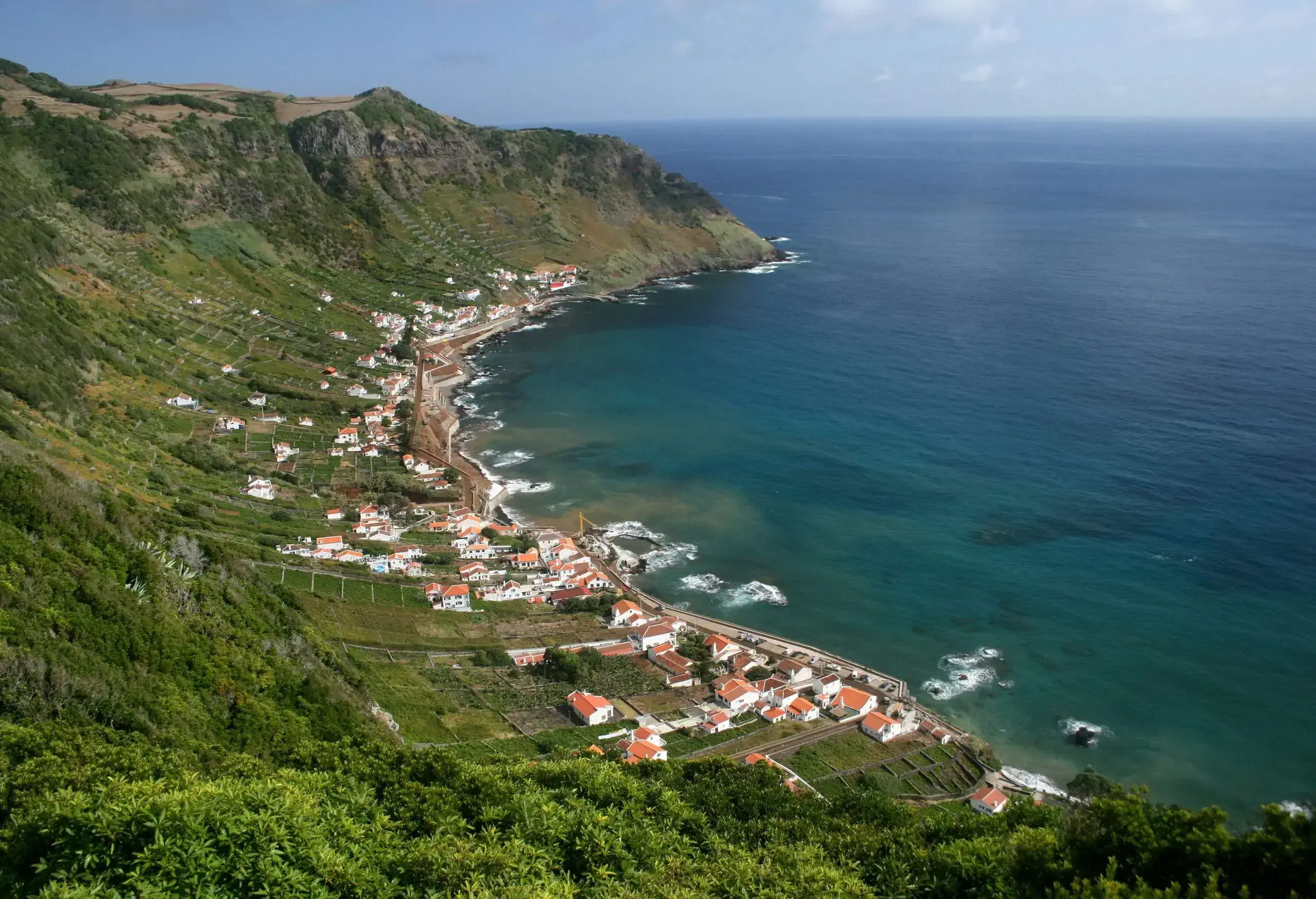
You can fly directly to Santa Maria’s Vila do Porto Airport (SMA) from Heathrow or Gatwick, or take the same round trip via Lisbon on TAP.
Santa Maria attractions
Santa Maria is dominated by Pico Alto, a peak offering all-round views. You can also visit Poco da Pedreira, an old quarry notable for its red rock walls. For nature lovers, Parque Florestal Fontinhas is great for picnicking among cypress trees.
Santa Maria beaches
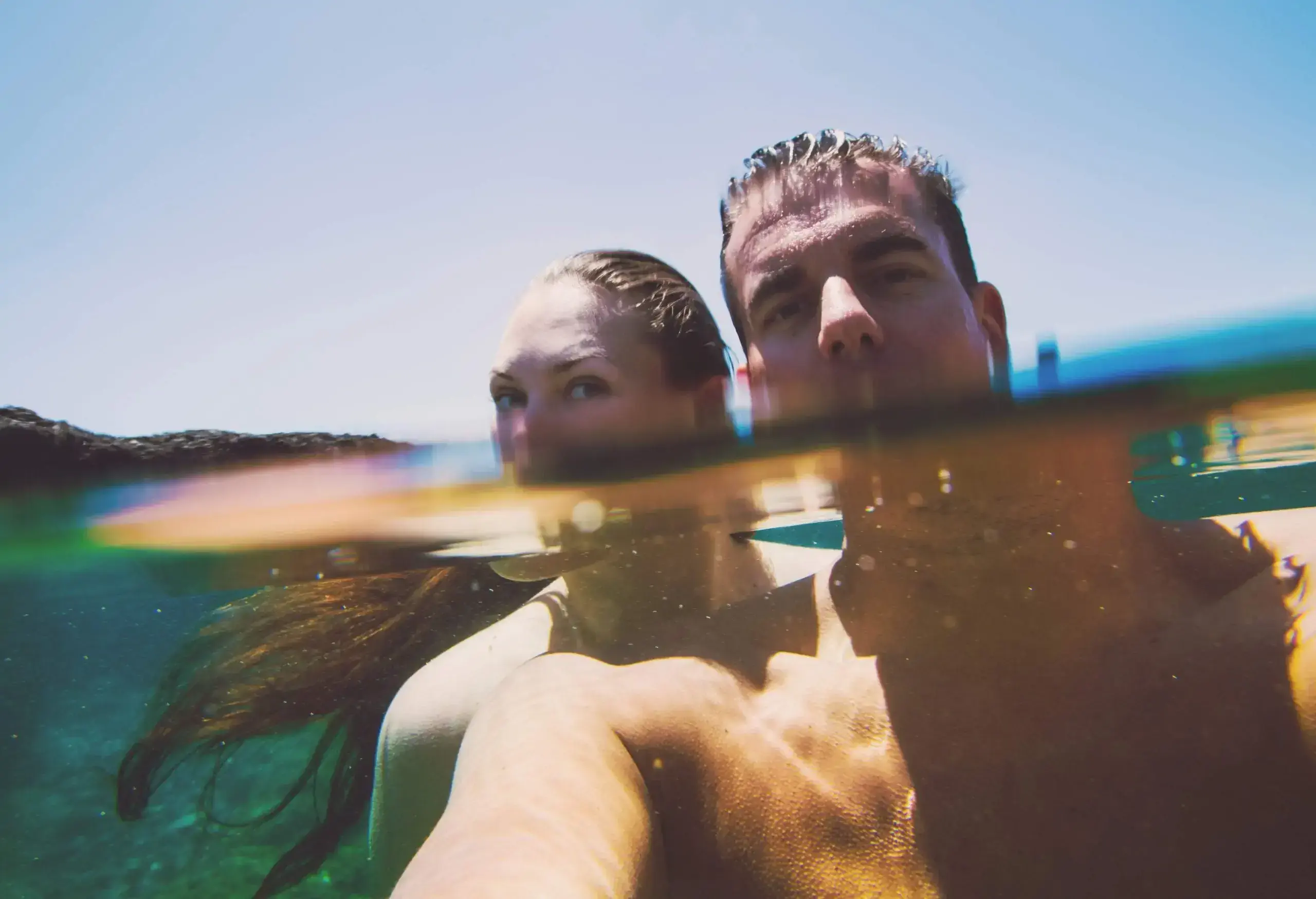
For a change from the usual black sands, go to Praia Formosa, which has white sand and hosts the Maré de Agosto music festival in August. Baía de São Lourenço has an amphitheatre setting, surrounded by hills with vineyards.
The north has small bays to discover, like Baía do Raposo, into which an 80m waterfall falls. For a family-friendly beach, choose Piscinas da Maia, with shallow rock pools and lifeguards.
Terceira
You’ll fly the same route from London to Lajes Airport (TER) on Terceira, once again stopping over in Lisbon.
Things to do in Terceira
Visit Angra do Heroísmo, a UNESCO World Heritage town with a small quiet beach. The island lends itself to walking and hiking in nature. You can explore Monte Brasil nature reserve or drive to the highest point, Serra de Santa Bárbara.
Terceira’s best beaches
Prainha da Praia da Vitória is the main beach in Terceira, centrally located alongside the town’s marina. You can get umbrellas here, and there are restaurants and entertainment venues. For surfing, choose Praia da Vitória. Alternatively, Porto Martins has calm water and sheltered kids’ pools.
Graciosa
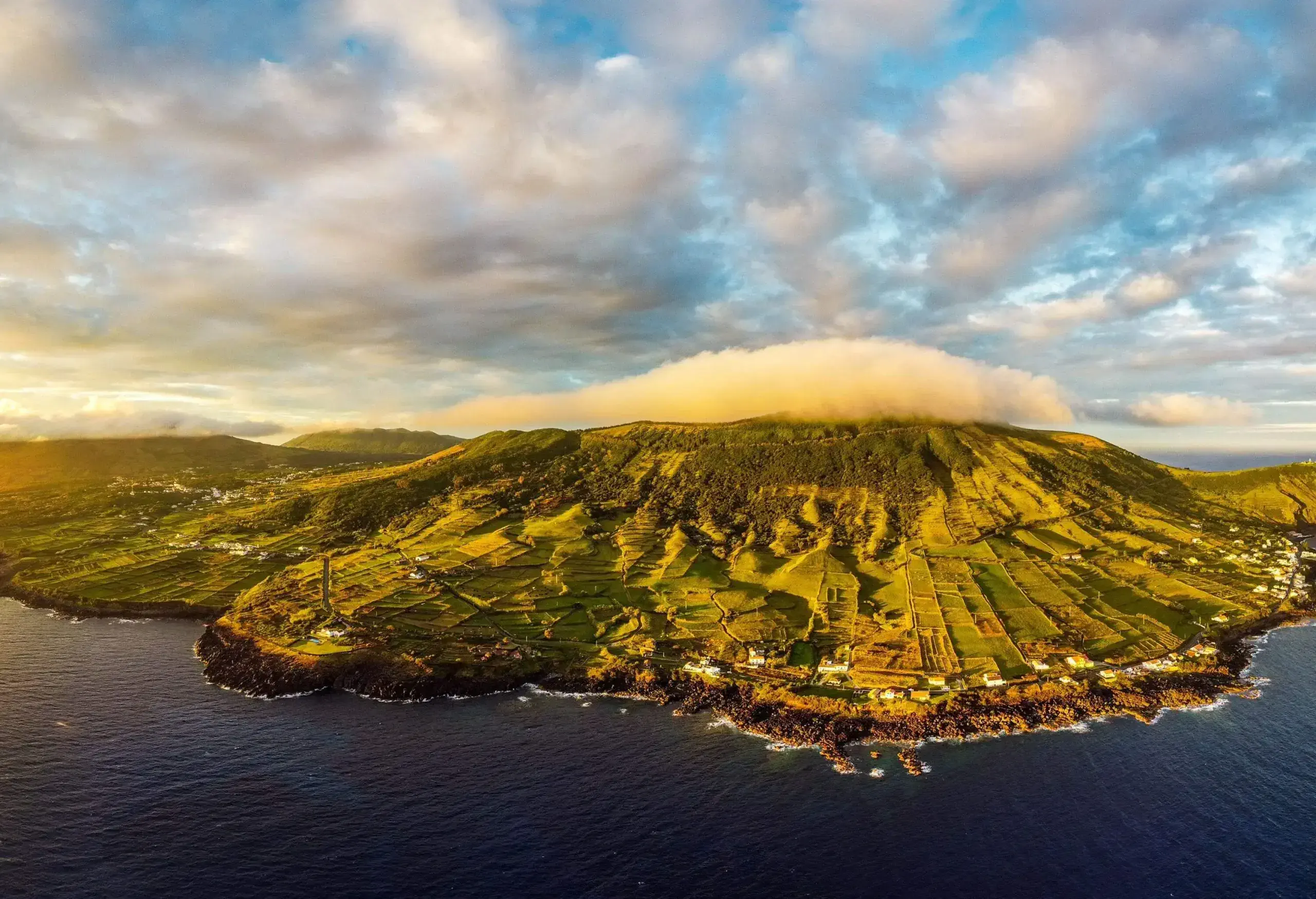
Graciosa doesn’t have its own airport – so fly to San Miguel and then board the local SATA Air Azores airline.
Graciosa’s main attractions
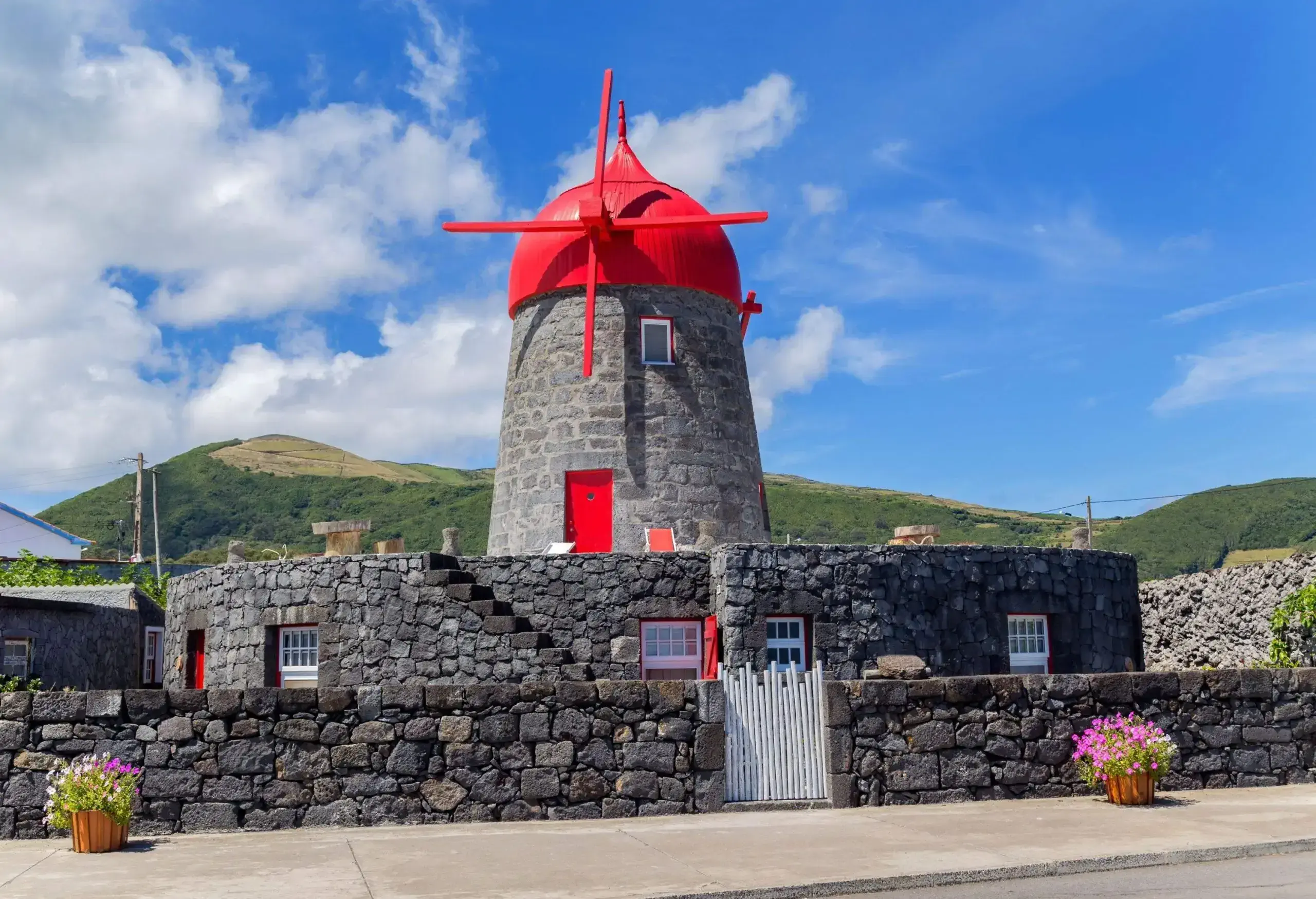
Graciosa has lush green fields covered with vineyards and Flemish windmills. For local cuisine, visit Queijadas da Graciosa Factory for their famous star-shaped sweet treats – I love eating them while watching the gorgeous sunsets from Ponta da Barca Lighthouse.
Azores beaches on Gracios
Most of the beaches here are small cosy bays. The sand is grey, with clear turquoise waters. There isn’t much vegetation to provide shade, though, so bring umbrellas.
Praia de Sao Mateus is the most popular, as it boasts a full suite of amenities for tourists. Otherwise, visit Piscinas do Carapacho, which has an artificial concrete coastline, making it ideal for water sports.
My favourite treat is to swim in Vila Franca do Campo, a dramatic volcanic crater completely surrounded by ocean.
São Jorge
São Jorge has a small airport (SJZ) designed for flights between islands. Stopovers will always be made at the main airports in the Azores (PDL, HOR, and LAJ, especially).
São Jorge tourist features
The historical capital of Velas contains most restaurants and entertainment on the island. For views over the Atlantic, I make sure to visit Ponta dos Rosais, a set of mini-islands on the southern tip of São Jorge. Sunsets are best enjoyed from the Urzelina Windmills.
São Jorge beachlife
This island is different to the others, as it’s more famous for its coastal plateaus than beaches. You can walk the well-developed trails around this area and find wonderful naturally-formed swimming pools. For more traditional beaches, visit the ones in Velas itself.
Pico
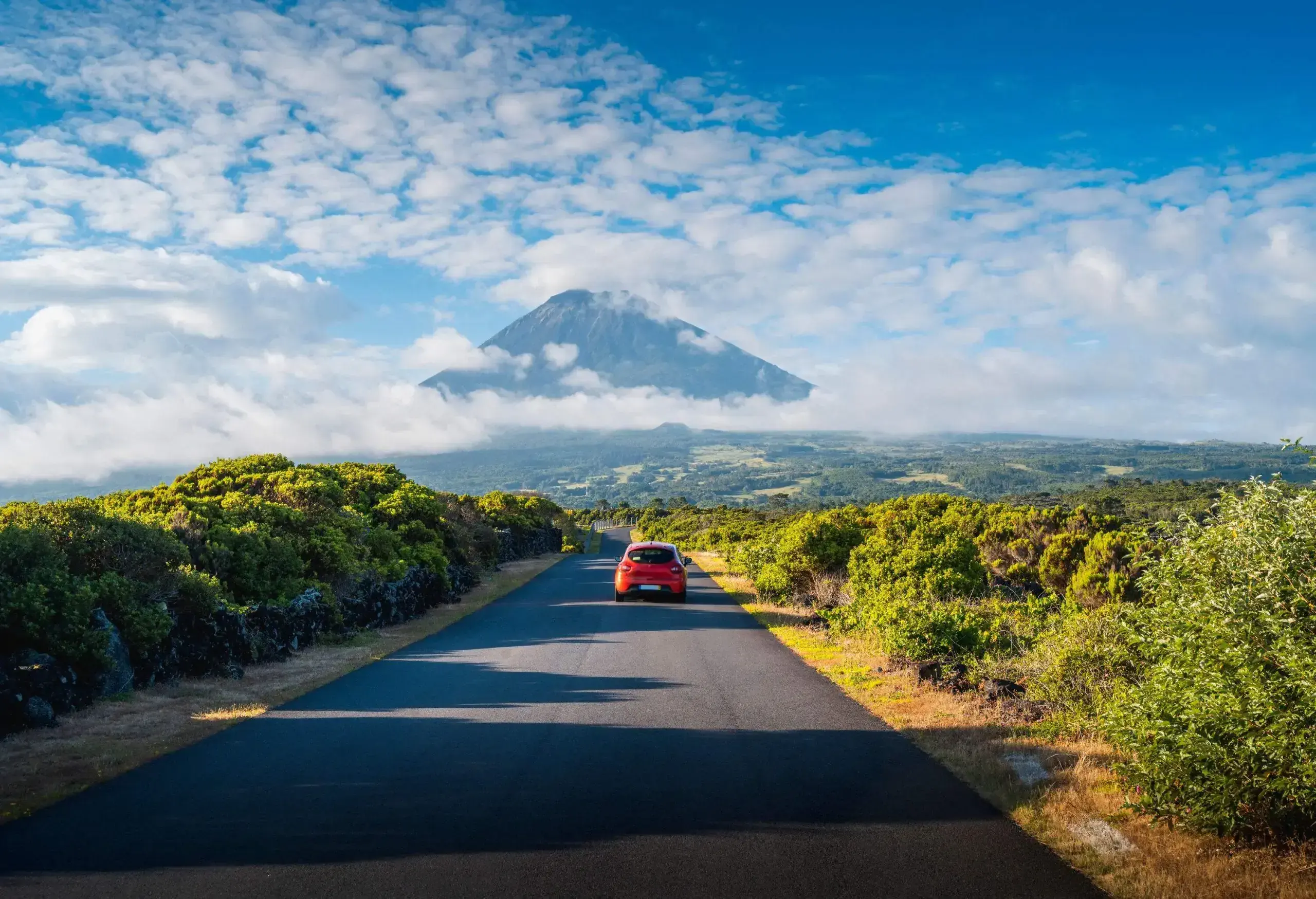
Pico island has its own airport (PIX), which you can fly to via Lisbon.
Attractions in Pico
Pico’s central attraction is the highest mountain in Portuguese territory, Ponto do Pico. The island also has a long winemaking history – discover it at the Wine Museum in the Carmelitas convent, and marvel at the dragon trees, some of which are over 1,000 years old.
Pico’s beaches
There aren’t any real beaches on Pico, but that doesn’t mean you can’t swim in the sea. There are small piers to jump off and some wonderful natural rock pools. My favourite is Poça das Mujas, in the eastern Calheta de Nesquim area.
Faial
To reach Faial island, catch a connecting flight from the UK to Horta (HOR), via Portugal.
Touring Faial
Faial has barren areas that resemble moonscapes, like Capelinhos. Previously a whaling station, you can now sight whales from its shores, and visit the Porto Pim Whale Museum. For panoramic island views, head to Espalamaca lookout point.
Faial beaches
The main Porto Pim beach has white sugary sand and great snorkelling water. If you prefer a black lava beach, Praia do Almoxarife is the best bathing beach. Conceição Beach and Praia do Norte also have black sand. The latter has a heavy swell though, so it’s better for surfing.
Flores
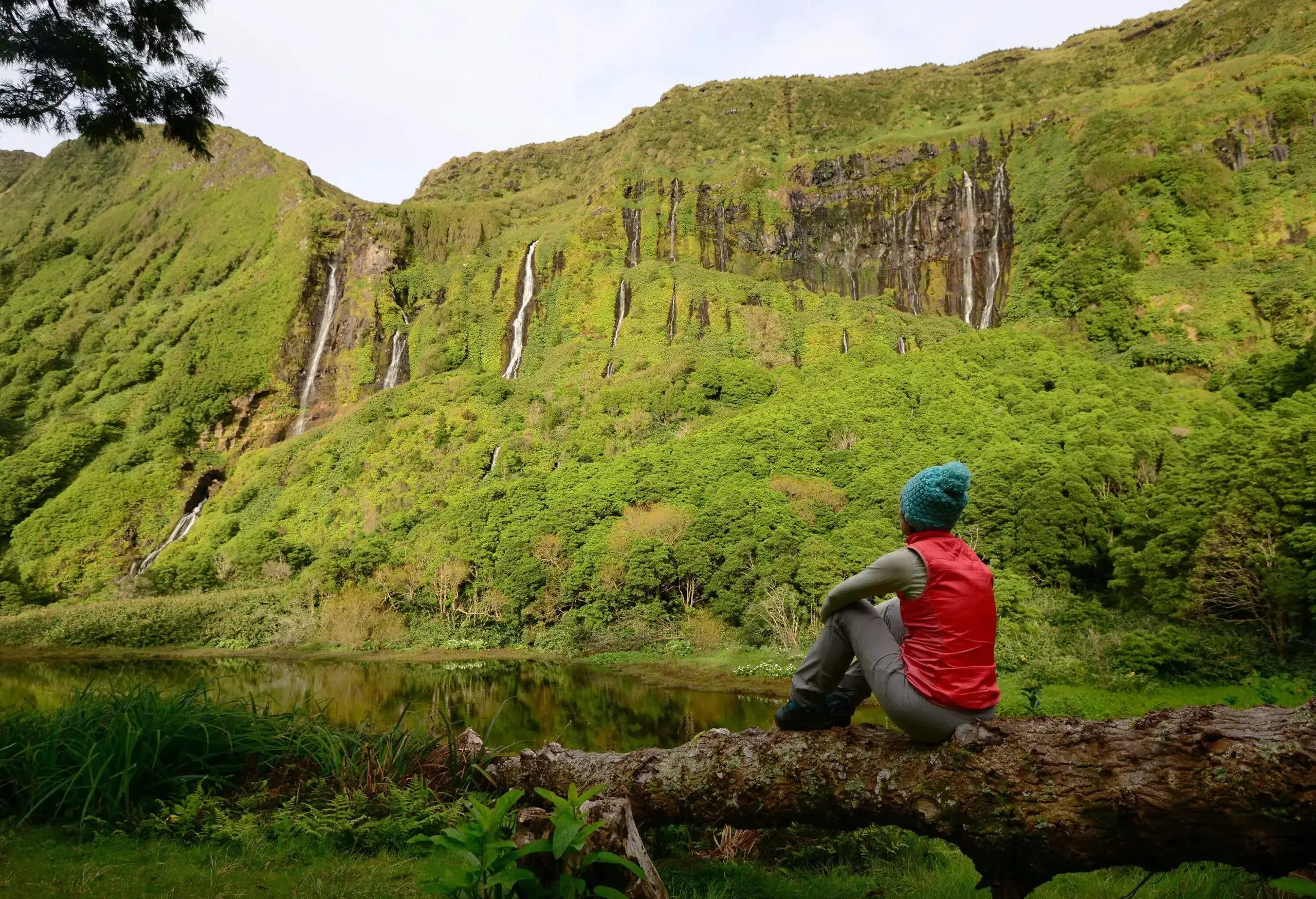
To get to Flores fly to Horta on Fayal, then take a domestic flight.
What to see in Flores
Flores has one of my favourite hiking trails, the Poço da Ribeira do Ferreiro, with dozens of waterfalls cascading down steep green cliffs. Then there are the beautiful Lagoa Rasa and Funda volcanic lakes. Afterwards, I like to stop at Queijaria Val de Fazenda to taste a variety of local cheeses.
Flores beaches
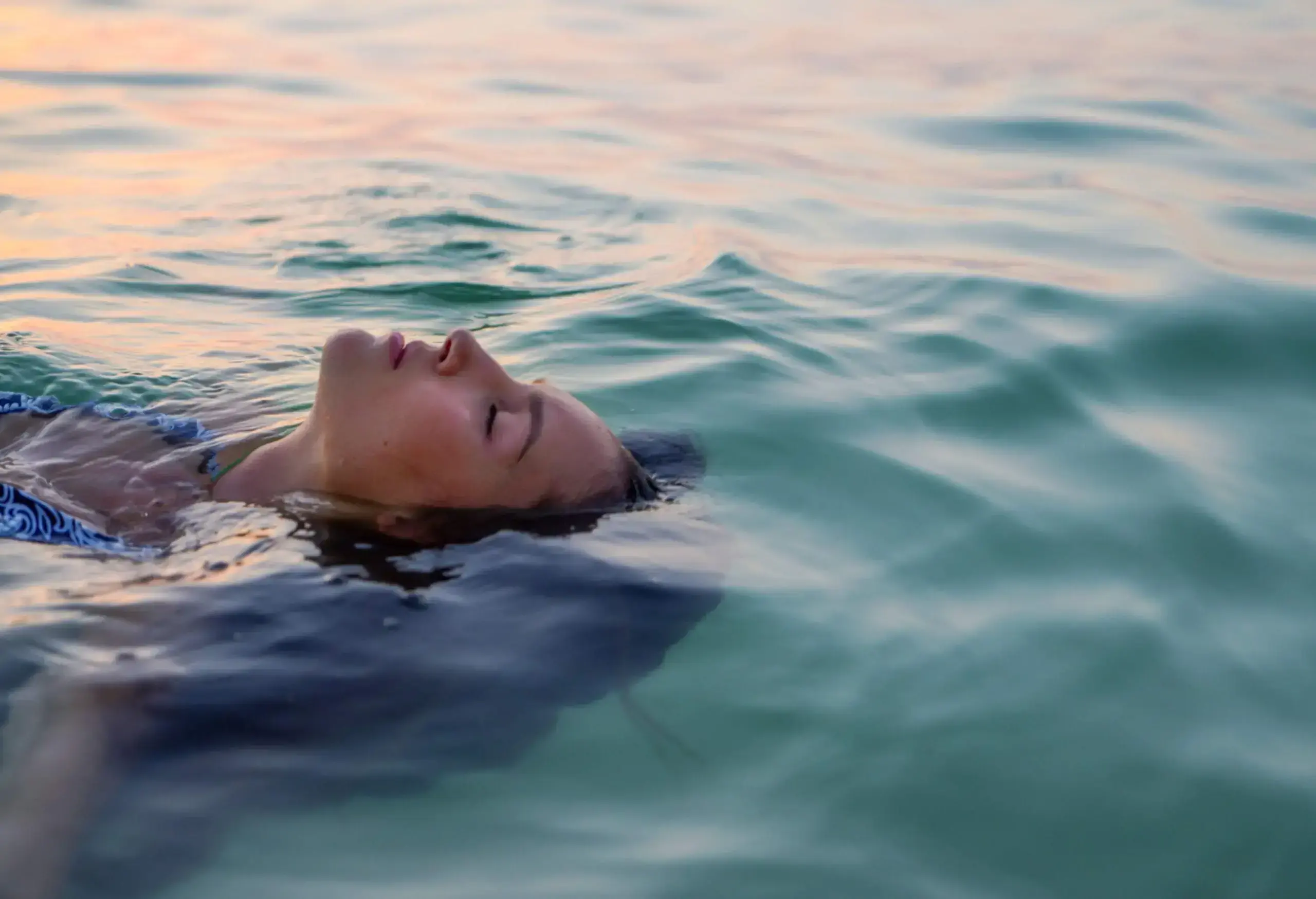
Unfortunately, Flores doesn’t have any real beaches, but rather the pebbled shores of Faja Grande and Lajes. However, I really love swimming in the natural pools at Santa Cruz, known as ‘piscinas naturais’
Flores has one of my favourite hiking trails, the Poco da Ribeira do Ferreiro, with dozens of waterfalls cascading down steep green cliffs.
Corvo
Corvo is alongside Flores, so you can book the same flight route to Fayal then fly domestically.
Sights of Corvo
Corvo is ideal for hikers and nature lovers. My favourite trail winds around the volcanic lake at Lagoa do Caldeirão. If you want a more serious challenge, hike to the top of Corvo’s highest mountain, Monte Gordo. The island is also heaven for birdwatchers.
Beaches of Corvo
Corvo is the smallest of the Azores islands, but it does boast a single beach, Praia da Areia, one of the best Azores beaches. The water is almost see-through and the soft volcanic sand feels luxurious between your toes.
How was this guide created?
I’ve always been drawn to islands, and often visited Indian Ocean getaways like the Maldives, the islands in Italy and the Croatia. This experience, and years of writing travel articles for KAYAK, have culminated in this guide on things to do in the Azores.

